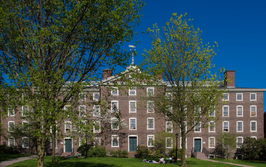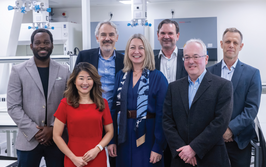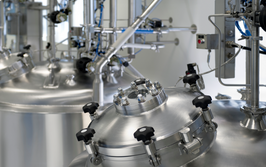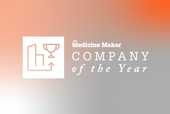The Mycoplasma Issue
While contamination issues continue to limit the potential of gene therapy, scientists can no longer afford to ignore the best detection methods
Marwan Alsarraj | | 5 min read | Practical
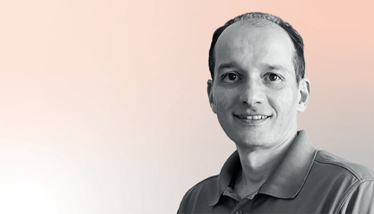
Gene therapies have set the pharmaceutical world’s passion and imagination ablaze, but the manufacture of these advanced therapies presents fundamental challenges that biomanufacturers must address to ensure proper quality control and patient safety.
Though gene therapies may employ a variety of viral vectors to deliver a genetic payload, AAV-based gene therapies are currently the most popular platform. Production of an AAV gene therapy involves transfecting cultured cells with a therapeutic gene designed to counteract the illness and genes encoding recombinant AAV. Through cellular lysis, purification, and additional processing, the goal is to remove cellular particles so that only the viral vector containing the therapeutic gene remains. However, this ubiquitous system has a flaw: nearly one-third of cell lines worldwide are contaminated with mycoplasma bacteria (1). Mycoplasma negatively affects gene therapies in two significant ways. Firstly, mycoplasma can influence cellular characteristics, such as metabolic dynamics and gene expression, which can cause biased or misleading results. Moreover, it can even trigger malignant transformation (2, 3).Secondly, some species within this genus are also directly pathogenic to humans. For example, the bacteria M. pneumoniae can cause pneumonia.
Mycoplasma can infect cell cultures in several ways, including contamination from neighboring cell lines or being passed from equipment or lab workers’ protective wear. In this article, we focus strictly on mycoplasma contamination, but it is by no means the only form of contamination in this modality. Other forms of contamination may include chemicals, viruses, cells from different cell lines, and other bacteria. Any contamination can render a batch of gene therapy products unsafe. The best thing developers can do is adhere to laboratory best practices that minimize cross-contamination and keep an eagle eye out for any cell culture impurities that may arise.
Mycoplasma bacteria are tiny – only 2-3 µm – making them difficult to detect via a standard microscope. They are also small enough to avoid being filtered out of a gene therapy product and resist the standard antibiotics used to control microbial infection in cell lines. Though researchers have established several methods to detect these bacteria, some approaches return results faster than others. The usual method for testing batches of gene therapy for mycoplasma contamination includes looking for colony growth on broth or agar, labelling the genetic material, and staining for genetic material or proteins. However, this approach can take as much as a month to return results, delaying manufacturing and, ultimately, how quickly patients may receive therapy (4).
Alternatively, quantitative PCR (qPCR) can measure product- and process-related impurities, which can detect the genetic signatures of mycoplasma in just one day (5).This technique amplifies a target genetic sequence, assessing how many amplification cycles occurred before the amount of the target sequence reaches a threshold. This result is then compared with a standard curve to estimate the initial concentration of the sample.
However, some qPCR tests can overestimate mycoplasma concentration, and also cannot distinguish DNA from live bacteria from free DNA. To clarify, biomanufacturers using qPCR will compare the ratio of genome copies with the number of colony-forming units grown on agar plates. However, since this ratio varies between batches (because the inherent growth rates of bacteria vary and because growth rates may be affected by variable culture conditions) this technique does not provide an absolute count of mycoplasma genome copy.
Tools to detect mycoplasma continue to advance. A newer approach is droplet digital PCR (ddPCR) technology, which offers absolute quantification of nucleic acids, with higher specificity and sensitivity than qPCR, also returning results in about a day. To directly measure mycoplasma levels in a batch of gene therapy, ddPCR technology partitions the sample into 20,000 1nL droplets, with one or a few nucleic acid molecules per droplet. A separate reaction occurs in each droplet, and after amplification, any droplet that contains a target sequence produces a robust fluorescent signal. A droplet reader counts the number of positive droplets emitting the fluorescence signal and those emitting only background fluorescence to determine the number of target nucleic acid sequences in the original sample. Many biomanufacturers are using ddPCR technology to assess the absence or presence of mycoplasma more confidently in their gene therapy product and screen out unsafe batches.
In one study, researchers evaluated the sensitivity and specificity with which ddPCR technology can detect mycoplasma by measuring genome copies (GC) of three common species: M. pneumoniae, M. hyorhinis, and A. laidlawii. They found that ddPCR technology's limit of detection was remarkably low for all three: 6.29 GC/well, 5.63 GC/well, and 4.19 GC/well, respectively (6).
Furthermore, ddPCR technology could detect A. laidlawii at one colony forming unit per mL, while qPCR did not. Researchers also confirmed that their ddPCR assays only detect mycoplasma by assaying cultures with the three mycoplasma species and cultures of control species, C. sporogenes, L. acidophilous, and S. bovis, confirming no cross-reactivity.
With an increasing number of gene therapies on the horizon, it's more important than ever that biomanufacturers overcome contamination challenges associated with manufacturing. Currently, almost 1,800 active clinical studies are listed on clinicaltrials.gov, making gene therapy one of the most researched therapeutic modalities. Moreover, as soon as 2025, the FDA anticipates approving 10–20 new therapies per year (7). In my view, ddPCR technology is a tool that can no longer be ignored because it is primed to help ensure that gene therapies are safe and effective for everyone.
- HG Drexler, CC Uphoff, “Mycoplasma contamination of cell cultures: Incidence, sources, effects, detection, elimination, prevention,” Cytotechnology, 39, 75-90 (2002). DOI: 10.1023/A:1022913015916
- AO Olarerin-George, JB Hogenesch, “Assessing the prevalence of mycoplasma contamination in cell culture via a survey of NCBI‘s RNA-seq archive,” Nucleic Acids Res., 43, 2535-2542 (2015). DOI: 10.1093/nar/gkv136
- S Rottem, Y Naot, “Subversion and exploitation of host cells by mycoplasmas,” Trends Microbiol., 6, 436-440 (1998). DOI: 10.1016/s0966-842x(98)01358-4
- L Young et al., “Detection of Mycoplasma in cell cultures,” Nature Protocols, 5, 929-934 (2010). DOI: 10.1038/nprot.2010.43
- A Jean et al., “Assessing mycoplasma contamination of cell cultures by qPCR using a set of universal primer pairs targeting a 1.5 kb fragment of 16S rRNA genes,” PLoS One, 12 (2017). DOI: 10.1038/nprot.2010.43
- Bio-Rad, “Vericheck ddPCR Mycoplasma Detection Kit: Probe-Based Mycoplasma Detection to Reduce False Positive Results,” (2019).
- FDA, “Statement from FDA Commissioner Scott Gottlieb, MD and Peter Parks, PhD, Director of the Center for Biologics Evaluation and Research on New Policies to Advance Development of safe and Effective Cell and Gene Therapies,” (2019).
Marwan Alsarraj is the Biopharma Segment Manager at Bio-Rad. He has been at the forefront of developing, marketing, and commercializing technologies in the past 15 years in the life science research industry. Marwan obtained his MS in Biology at the University of Texas, El Paso.

